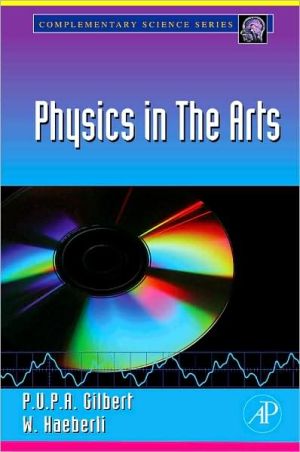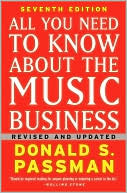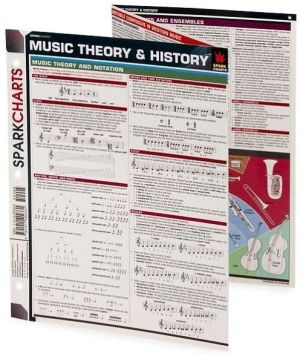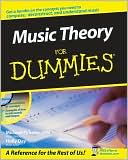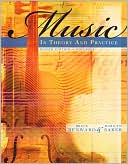Physics in the Arts
A deep yet accessible analysis of the physics of light and sound, and how our eyes and ears detect them, is not only intellectually enjoyable, but also useful to understand and interpret the world in which we live, all the phenomena that take place around us, and how we perceive them. In short, how we interface with our planet, its inhabitants, and their creations. Understanding the physics of light and sound may also increase the appreciation for works of art and for art itself, and even...
Search in google:
A deep yet accessible analysis of the physics of light and sound, and how our eyes and ears detect them, is not only intellectually enjoyable, but also useful to understand and interpret the world in which we live, all the phenomena that take place around us, and how we perceive them. In short, how we interface with our planet, its inhabitants, and their creations. Understanding the physics of light and sound may also increase the appreciation for works of art and for art itself, and even stimulate the artists among the readers to deepen their knowledge of their media, of how people interface with them, and perhaps improve their art production.* Offers an alternative route to science literacy for those interested in the arts, music and photography* Popular science book with wide readership beyond the classroom at an accessible level* Material covered at a level appropriate for self-study or as a complementary textbook* Companion website for Instructors available in Spring 2008
Introduction xiLight and Sound xiLight and Light Waves 1Speed of Light 5Electromagnetic Spectrum 6Polarization 7Reflection and Refraction 10Specular Reflection of Light 10Refraction of Light 14Total Internal Reflection 17Reflection and Refraction in Diamonds 21The Rainbow 25Questions 27Lenses 30The Prism 30Converging and Diverging Lenses 31Focal Length 33Images-Real and Virtual 36Three Easy Rays 39The Lens Formula 41Note on Magnification 45Lens Aberrations 47Chromatic Aberrations 48Spherical Aberration 49Questions 52The Eye 56Accommodation 58Eyeglasses 60Nearsighted Eye 61Farsighted Eye 62Astigmatic Eye 62Photography 63The Camera 63Focusing the Camera 64Choosing the Exposure Time 67Choosing the Aperture 68Depth of Field 69Why the f Number? 70The Film 71Digital Photography 75Putting it All Together: Taking a Photograph 76Questions 80Color and Color Vision 82Color 82Color Sensitivity of the Eye 84Physical and Psychological Color 89Color: Hue, Saturation, and Brightness 90Light Interaction with other Objects 92Scattering or Diffuse Reflection 92Questions 98Additive Color Mixing 99Primary Colors 99Adding Primary Colors 100The Color Triangle 103Low-Intensity Colors 107Spectral Colors 107Non-Spectral Colors 112Summary 113Additive Color Mixing in Painting 114Questions 117Subtractive Color Mixing 118Filters 118Subtractive Primary Colors 120Subtractive primaries 122Color Photography 124Pigments 125Change in Saturation 128Why Do Blue and Yellow Make Green? 130Change in Hue 131Questions 134Color-Generating Mechanisms 136Illuminating Light 136Pigments 136Structural Color: Iridescence 137More Color-Generating Mechanisms Due to Iridescence 139Color in Gemstones 142Mineral Color Due to Charge Transfer 144Mineral Color Due to Color Centers 144Color in Gems Due to Band Gap Absorption of Light 145Periodic Oscillations 148Displacement Graph: Position x Changes with Time t 151The Period T and the Frequency f 153Large and Small Numbers 154Speed of Motion 154Questions 156Simple Harmonic Motion 158The Spring Constant 160Oscillation Frequency for Simple Harmonic Motion (SHM) 161Wave Shape of Simple Harmonic Motion 163Phase Angle 165Questions 166Damped Oscillations and Resonance 168Damped Oscillations-The Concept of "Damping Time" 168Resonance 170Build-up Decay of Musical Tones 175Applications in Music 175Resonators in Musical Instruments 175Questions 177Adding Sound Sources: Beats and Harmony 179Principle of Superposition 179Three Special Cases 180Two Pure Tones of the Same Frequency 180Beats 182Harmony 184For the Fun of It: Lissajous Figures 185Questions 188Sound Waves 190Propagation of a Pulse 190Longitudinal and Transverse Waves 192Sound Waves in Air Are Longitudinal Waves 193Speed of Sound in Air 195Wavelength and Frequency 196Relevance to Size of Instruments or Loudspeakers 197Sound Propagation 198Interference of Sound Waves 199Concert Hall Acoustics 201Questions 205Sound Perception: Pitch, Loudness, and Timbre 206Loudness and Amplitude 207Loudness and Frequency 210Pitch Discrimination 213The Ear 214The Parts of the Ear 214Place Theory of Pitch Perception 216What Do the Auditory Nerves Tell the Brain? 217Vibration of Strings 220Single Modes 220Higher Modes 222Traveling Versus Standing Waves 223The Voicing Formula 225How Do Modes Relate to Music? 226Damping of Higher Partials 227Plucked Strings: Missing Partials 227Playing Harmonics 228Real Strings Have Some Stiffness 228Questions 229Pipes 231Pressure Pulse in a Pipe 231Reflections in Open and Closed Pipes 232Boundary Conditions 233Standing Waves in Open Pipes 233Fundamental Frequency of Open Pipe 234Higher Modes of Open Pipe 235Fundamental Mode of Closed Pipe 237Higher Modes of Closed Pipe 238Playing Tunes on Wind Instruments: Fingerholes and Overblowing 240Other Shapes 240Acoustic Length 241Questions 241Fourier Analysis 243The Fourier Theorem 243Sound Spectrum 244Fourier Analyzer (Sound Analyzer) 249Fourier Synthesis 251Why Can't We Synthesize a Stradivari? 252Questions 254Musical Scales 256Musical Intervals 257Consonance (Harmony): Simple Number Ratios 258The Major Triad 259Constructing a Scale: The Just Scale 260Whole and Half Tone Intervals 263Names of Intervals 264Transposing: Why Black Keys? 266Perfection Sacrificed: The Tempered Scale 267Major and Minor Scales 273The Natural Scale 273Questions 274Musical Instruments 275Structure of Musical Instruments 275Excitation Mechanism 276Playing a Tune 278Questions 283Solutions to Problems 284Index 307
\ From the Publisher"...the work of a pair of great physicists and top teachers...clear and imaginative. I cannot remember an occasion where a student complained about this text." \ —Francis Halzen, University of Wisconsin, Madison\ "I found the book very-well written...the book is also very popular with students. It covers the material at a depth appropriate for non-science students who are interested in the subject...it will be a very useful addition to the textbook literature for liberal arts colleges."\ — Baha Balantekin, Eugene P. Wigner Professor of Physics, University of Wisconsin, Madison\ \ \
